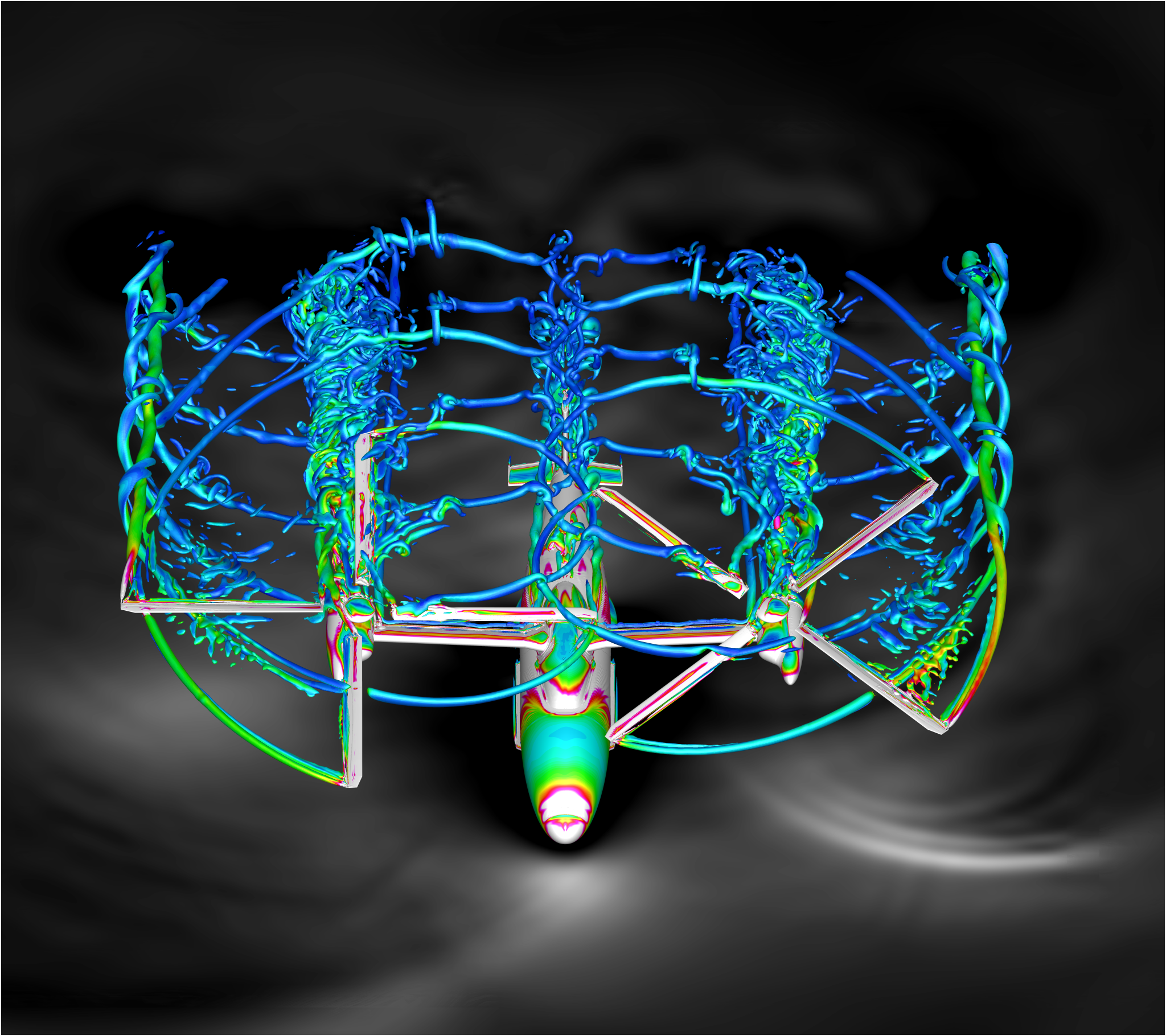
In this high-resolution visualization of NASA’s side-by-side, intermeshing rotor air taxi concept, researchers are working to understand complex rotor air flow interactions, simulated using high-fidelity computational fluid dynamics methods. The image/video shows the vortex wake, colored according to pressure. Intermeshing rotors offer the advantage of being more compact while being more efficient in cruise than twin-motored helicopters without overlapping rotors. How do NASA engineers conduct such research? They do so with the help of some of the most powerful supercomputers in the world, giving them the capability to solve complex computational problems in just a few days.
Urban Air Mobility, a safe and efficient system which supports a mix of onboard/ground-piloted and increasingly autonomous operations – is the new era of transportation. UAM vehicles are envisioned to be autonomous, using electric or hybrid propulsion to transport a small number of passengers and cargo from one point in an urban area to another, avoiding all ground traffic. These rotary wing vehicles would also have the capacity for vertical take-off and landing, eliminating the need for long runways.
NASA’s strong history and experience in aeronautical research will not only assist with determining how such ideas can come into fruition, but also help to establish effective ways to integrate the vehicles safely and efficiently into our airspace.
Research like this was highlighted at this year’s supercomputing conference, SC18. For more information about NASA’s participation, visit https://www.nas.nasa.gov/SC18/.































